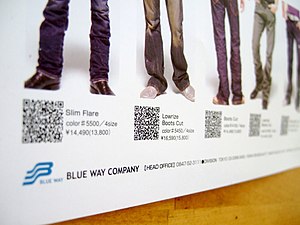When I posted yesterday about QR codes, those little symbols used to put Web links on real-world objects, reader Azijn made this thought-provoking comment:
I find QR codes a bit weird. Why not have an app that can simply recognize a certain default font in which advertisers will agree to publish their URLs? Humans and phones alike can recognize that!
Indeed, I can find no such app. How come? Azijn’s idea would surely work.
But then you have to remember that most design actually happens by accident. QR codes are prevalent for this purpose mainly because they’ve been around long enough to catch on. They were invented by Toyota for labelling components and it was in Japan that they were first used on phones. But that doesn’t mean of course that they’re the best solution.
QR codes did have a couple of advantages. They were designed expressly to be read by machine and have built-in error correction, so they were easier for simple devices to process. But now that phones are very powerful computers they should have little trouble handling text recognition – I doubt if there’s even any need for special fonts¹.
I can think of one way to speed things up though: A typographical convention to indicate where a website address begins and ends, such as putting it between two easily recognised symbols, so that the phone doesn’t need to scan whole pages. Example:
►http://i.doubt.it◄
Any such text will be highlighted on your phone’s screen, showing you that it’s clickable.
Can I get a patent on that?
- There have been fonts designed to be easily read by machine since at least the 60s, for example the hardcore OCR-A, the more friendly OCR-B, or the space-age classic Westminster – which I had always thought belonged to NASA or IBM or some such but turns out to have been created by a British bank. These days though Optical Character Recognition software is so good that they are no longer really necessary, though obviously plainer, less ornate fonts are likely to get better results.

